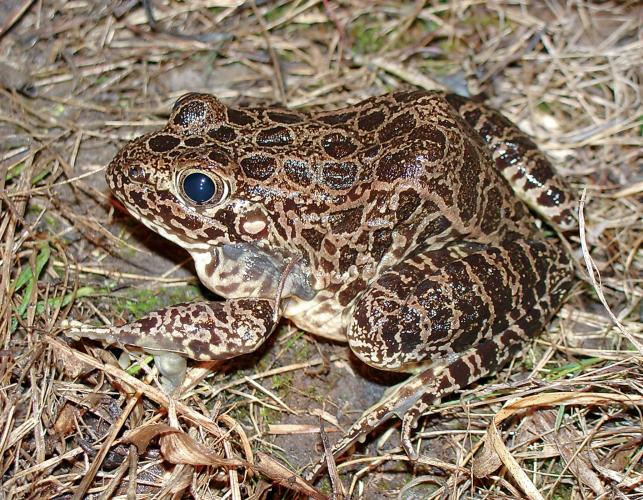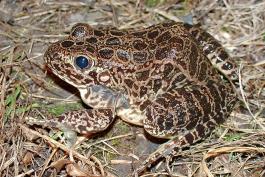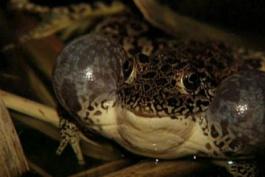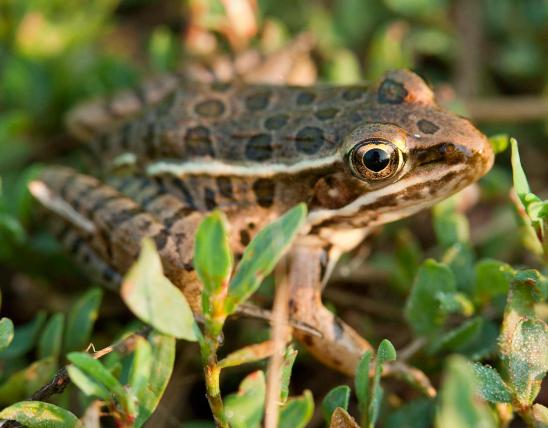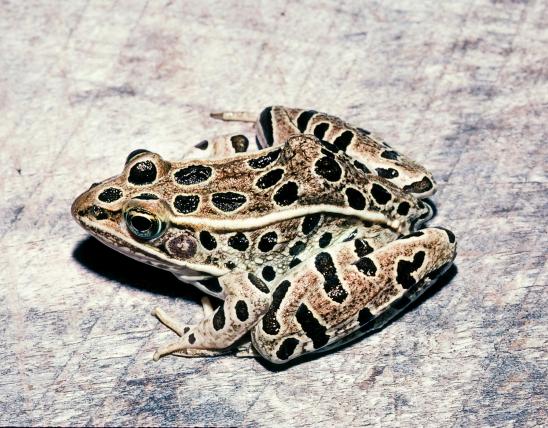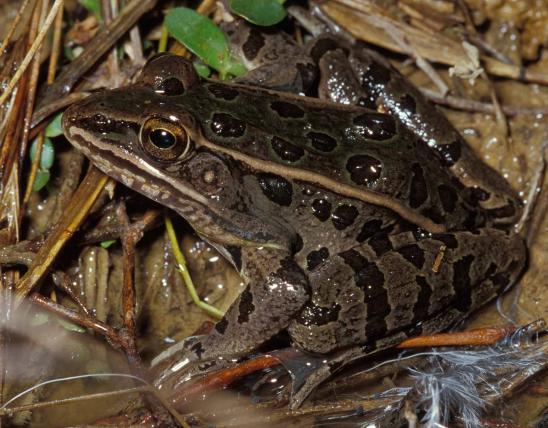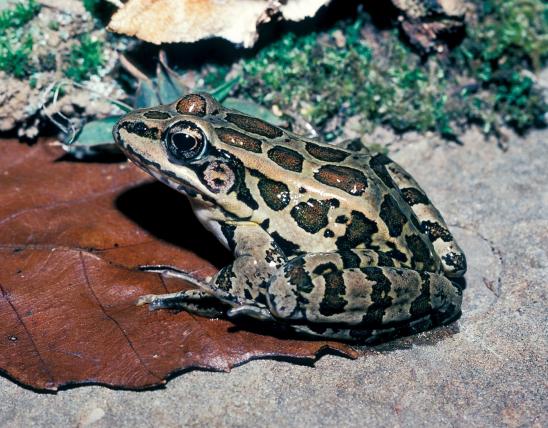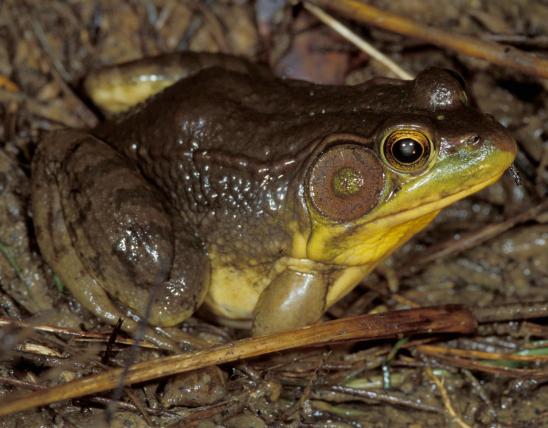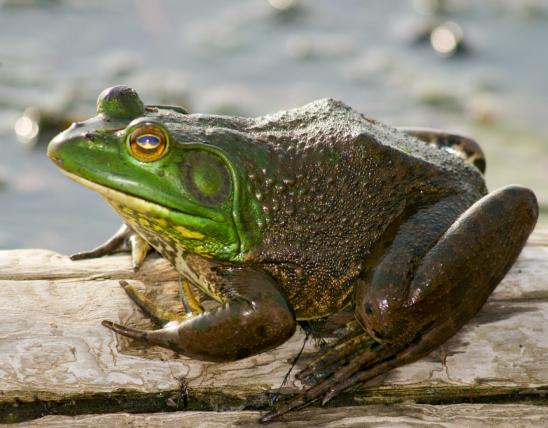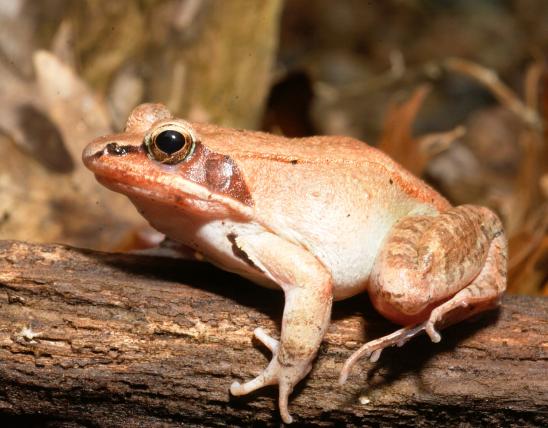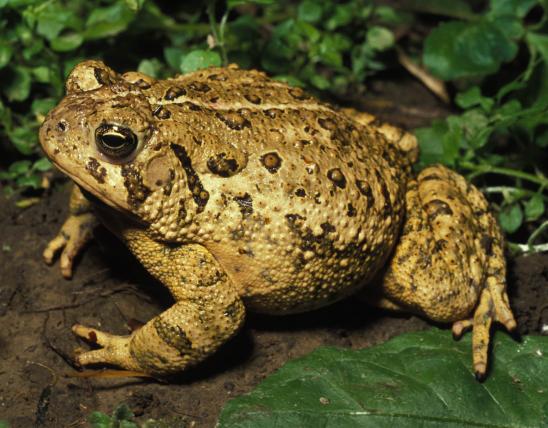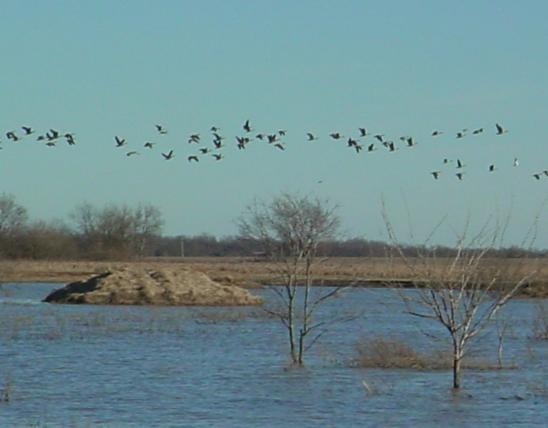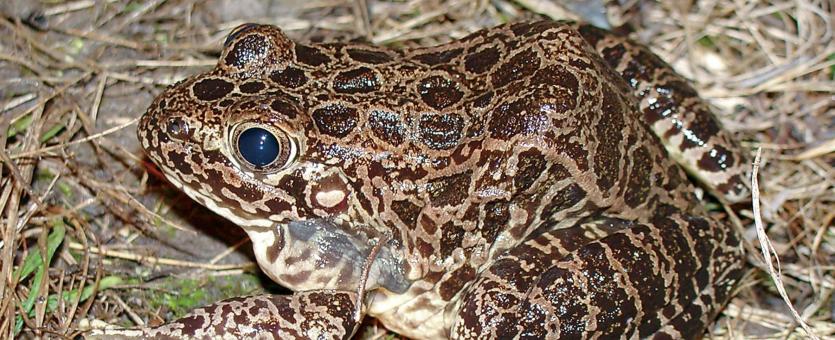
The northern crawfish frog is a large, light-colored frog with numerous closely set dark spots. The head is disproportionately large. A prominent fold extends along each side of the back from the eye to the thigh. Ground color varies from light tan to light gray; the dark spots may be dark brown, gray, or nearly black and are often edged in white. Between the dark spots, a fine network or spotting of dark pigment is usually present. The belly is white.
The call of a male northern crawfish frog is a deep, loud, snoring “gwwaaa,” which can be heard from a considerable distance. As they call, their large, lateral vocal sacs vibrate the water surface. A number of males calling in chorus sounds like pigs during feeding time. The males call while sitting in shallow water or floating in open water and have been reported to call while submerged.
Similar species: Missouri has eight members of the true frog family. These are typically medium to large frogs with long legs, smooth skin, and well-developed webbing between the hind toes. Another common characteristic is a glandular fold or ridge of skin along each side of the back (these are called dorsolateral folds).
Adult length (snout to vent): 2¼–4½ inches; occasionally to nearly 5 inches.
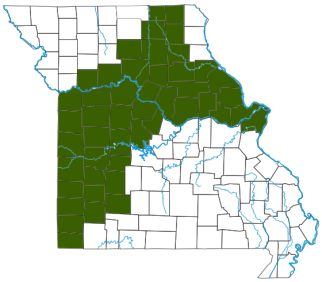
Occurs in the rolling hills, prairies, and meadows of southwestern, extreme western, north-central, and eastern Missouri.
Habitat and Conservation
This species is restricted to native prairie or former prairie areas in our state. Populations occur in or near low-lying hay fields, native grass pastures, prairies, and occasionally in river floodplains.
This very secretive species spends most of its time hidden in burrows. Crawfish frogs primarily use crayfish burrows for retreats but may occasionally use the burrows of other animals. A crayfish burrow being used by this species will have a noticeably flattened and denuded platform at the entrance. Because crayfish burrows can be about 3–5 feet deep and are often at or below groundwater level, the frogs are able to use them as winter retreats. In many circumstances, crawfish frogs use the same burrows from year to year.
Crawfish frogs become nocturnal (active at night) especially after warm, heavy summer rains. They are seldom encountered, however, except during their short breeding season.
Food
Northern crawfish frogs forage mainly at the entrance of their burrows while awaiting approaching prey. Their food consists of a variety of invertebrates, including insects, spiders, and small crawfish.
Status
Listed as vulnerable in Missouri due to loss of habitat; a species of conservation concern.
Although nearly all native prairie regions of the state have undergone intensive cultivation, this species has persisted. Populations are more stable in the Osage Prairies of western and southwestern Missouri, but populations north of the Missouri River, in the claypan prairie region, are rapidly declining and only small, isolated populations remain. The last remaining native prairies in Missouri are valuable for many reasons, but they are particularly valuable as habitat for northern crawfish frogs. To keep this species in Missouri, we must protect, properly manage, and reestablish prairies.
Because this species requires fishless ponds for breeding, the protection and addition of small, fishless ponds and pools in or near native prairies is highly recommended. Protecting the water table and reducing soil compaction from excessive use also are important. When soil becomes compacted or the water table becomes too low, burrowing crayfish can be eliminated, thus reducing the available burrows necessary for crawfish frog survival.
Taxonomy: The true frog family (Ranidae) is the largest and most widespread family of frogs. It contains 365 species in 14 genera and probably originated in Africa. Representatives of this cosmopolitan family occur on every major land mass except New Zealand, Antarctica, most oceanic islands, the West Indies, and southern South America. The largest genus in the family in the New World (North and South America) is Lithobates (formerly Rana), with about 50 species. Missouri’s species, formerly in genus Rana, are all in genus Lithobates. As of taxonomic understandings in 2016, the Rana genus is considered restricted to the eastern hemisphere and western North America. In Missouri, the genus Lithobates is represented by eight species.
Life Cycle
In our state, crawfish frogs are usually active from March to October and breed from March through mid-May. Males gather in semipermanent pools and fishless ponds to call. Heavy rains and moderate temperatures stimulate the males to migrate to breeding wetlands. The female may lay 2,000–7,000 eggs, grouped in clumps 5–6 inches across. These are deposited on submerged plant stems or branches in shallow water, and they hatch in 3–10 days. Tadpoles grow rapidly and usually transform to froglets, and leave the wetlands, from mid-May to early July. Lifespan may be up to 10 years.
Human Connections
The northern crawfish frog grows more valuable, and vulnerable, as our native prairies disappear. The prairie environment is a great part of the American story. A chorus of these frogs, along with the rest of the natural prairie, can evoke a profound sense of the indigenous northern and western Missouri landscape before settlement.
Ecosystem Connections
This species is an important component of the rich and diverse prairie ecosystems of our state. It helps check insect populations, and it depends a great deal on prairie-dwelling crayfish, such as the grassland crayfish) for food as well as for shelter. Other species, including mammals and birds, feed on crawfish frogs.
This frog requires a healthy native prairie habitat, including deep-burrowing prairie crayfish species, appropriate soils and water table depth, and adjoining fishless ponds and pools for breeding.
